包阅导读总结
1. 关键词:NoSQL 数据库、AI、增长、需求、文档存储
2. 总结:本文探讨了 NoSQL 数据库的增长情况,指出其增速虽放缓但仍受欢迎,且 AI 正推动其需求,多家公司围绕 NoSQL 与 AI 结合进行布局。
3. 主要内容:
– NoSQL 数据库曾增长迅速,4 年前因其与 AI 和 ML 兼容而发展。
– ChatGPT 出现后,NoSQL 数据库中向量数据库增长,文档存储和键值存储略有下降。
– Redis 宣布有争议的许可证变更,强调其在 AI 方面的应用,如 Redis CoPilot。
– MongoDB 也瞄准生成式 AI 用例,称比关系型数据库更适合此类工作负载。
– 目前各数据库公司均称能与 AI 良好结合,AI 需求旺盛使各类数据库受益。
思维导图: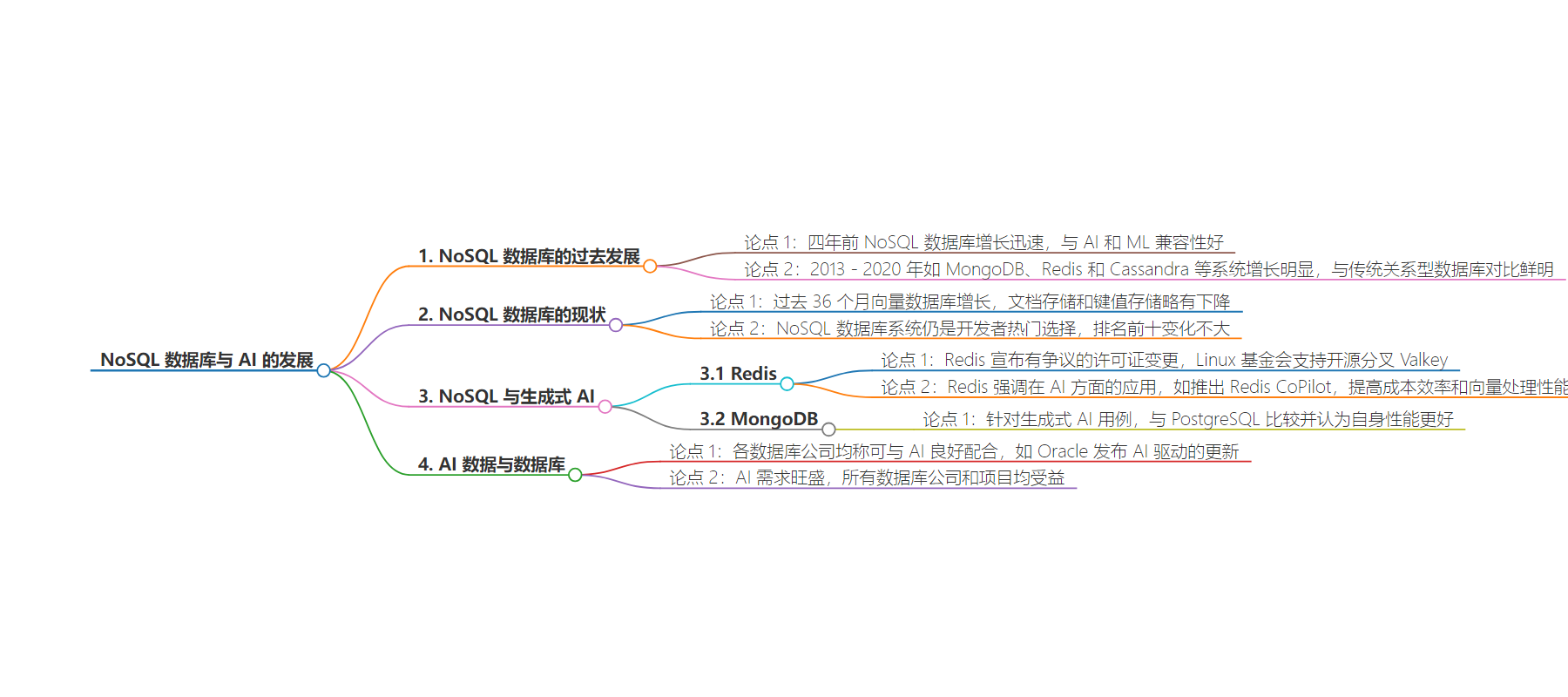
文章地址:https://thenewstack.io/nosql-database-growth-has-slowed-but-ai-is-driving-demand/
文章来源:thenewstack.io
作者:Richard MacManus
发布时间:2024/7/16 15:06
语言:英文
总字数:887字
预计阅读时间:4分钟
评分:84分
标签:非关系型数据库,人工智能,生成式人工智能,数据库优化,Redis
以下为原文内容
本内容来源于用户推荐转载,旨在分享知识与观点,如有侵权请联系删除 联系邮箱 media@ilingban.com
Four years ago, I wrote about how NoSQL databases were growing fast — in large part due to their compatibility with Artificial Intelligence (AI) and Machine Learning (ML). But that was before the generative AI boom that began with OpenAI’s release of ChatGPT in November 2022.
So what has happened to NoSQL databases since ChatGPT arrived on the scene? Are NoSQL database systems — like document stores (MongoDB), key-value (Redis), and wide column (Cassandra) — still growing in the new age of the vector database?
Back in 2020, to illustrate the growth of NoSQL database systems, I used the following graph from DB-Engines:
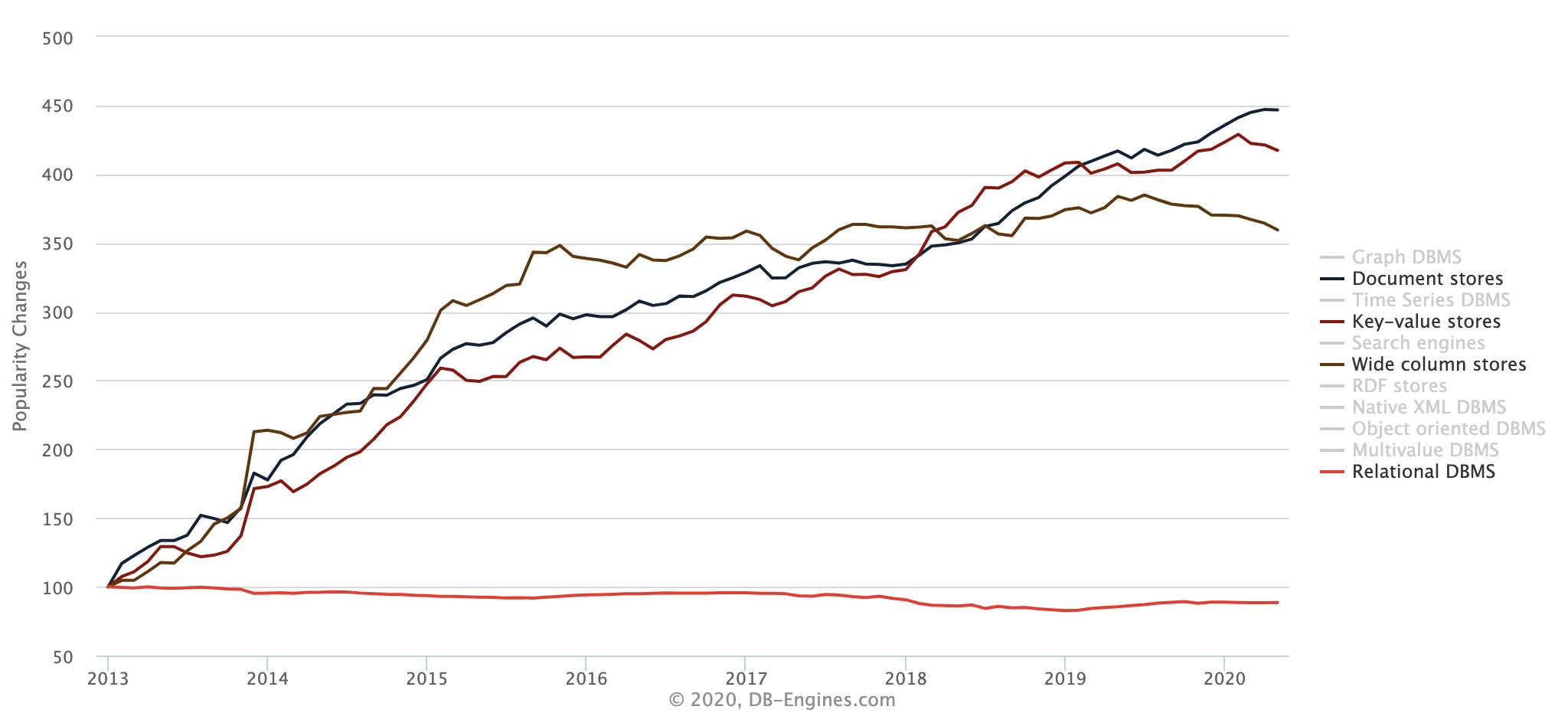
That showed the steep upward trajectory of systems like MongoDB, Redis and Cassandra from 2013-2020 (although there was a slight dip from all three towards the end of that period). Compared to the flat — and eventually downward — line of traditional relational databases, such as Oracle and MySQL, the NoSQL growth curve was significant.
Here’s the latest popularity chart from DB-Engines, for the past 36 months (3 years):
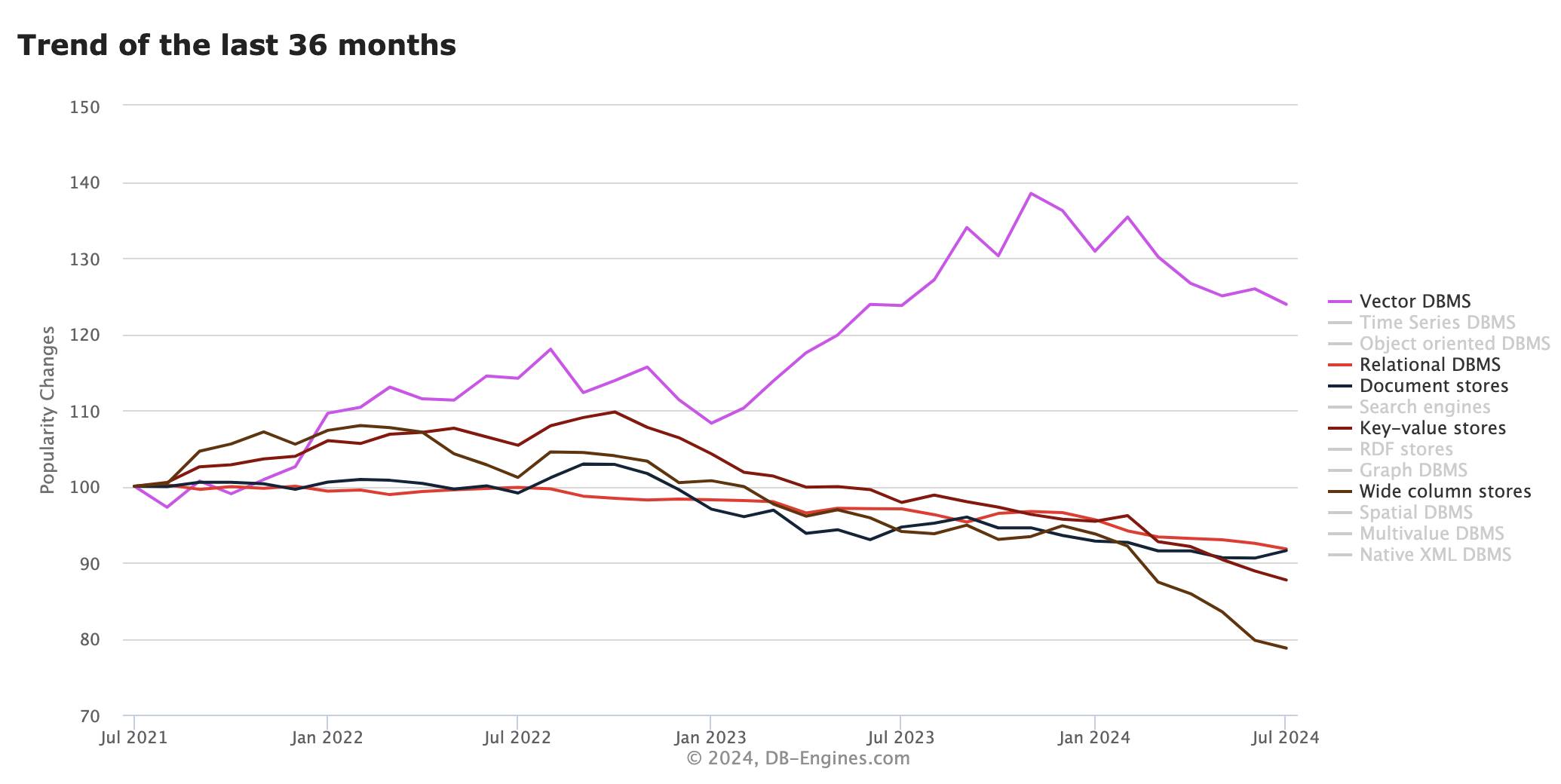
With the caveat that this graph measures popularity growth (and not actual users), we can see that vector databases have naturally experienced a growth spurt since 2021 — although it appears to have peaked towards the end of last year. Meanwhile, document stores and key-value stores have gone down slightly.
However, if we look at the chart from 2013, we can see that vector database growth hasn’t reached anywhere near the peaks of document stores and key-value stores (let’s disregard the wide column store chart, as its data set appears to have changed on DB-Engines since my 2020 post).
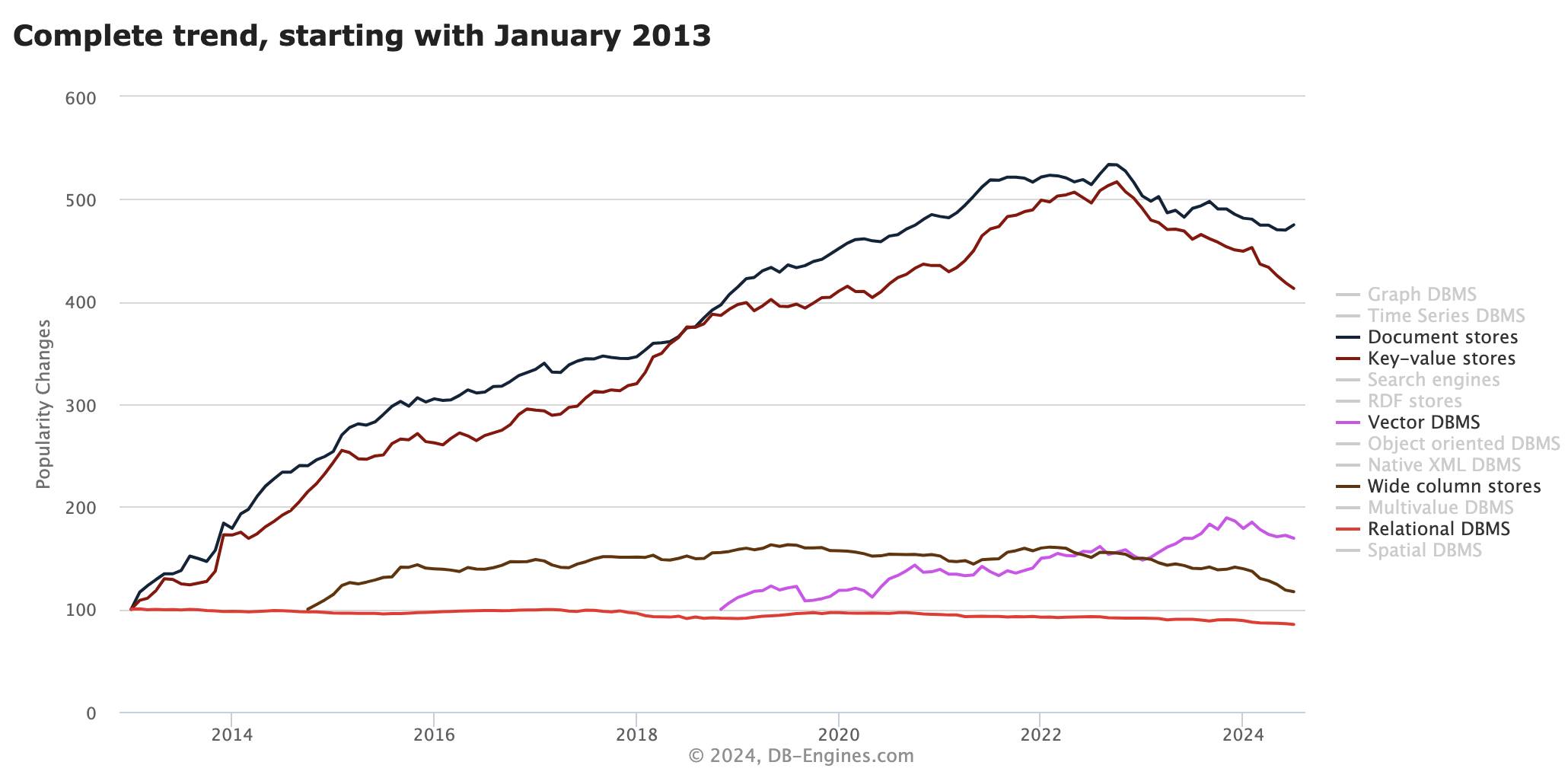
Also, despite a slight dip in growth rate, NoSQL database systems are still among the most popular choices for developers. The graph below shows little change in the top ten database systems for the past two years, with the top six (including MongoDB at 5 and Redis at 6) remaining unchanged. We also see that the top four database systems are all relational; and have significantly more users than MongoDB and Redis.
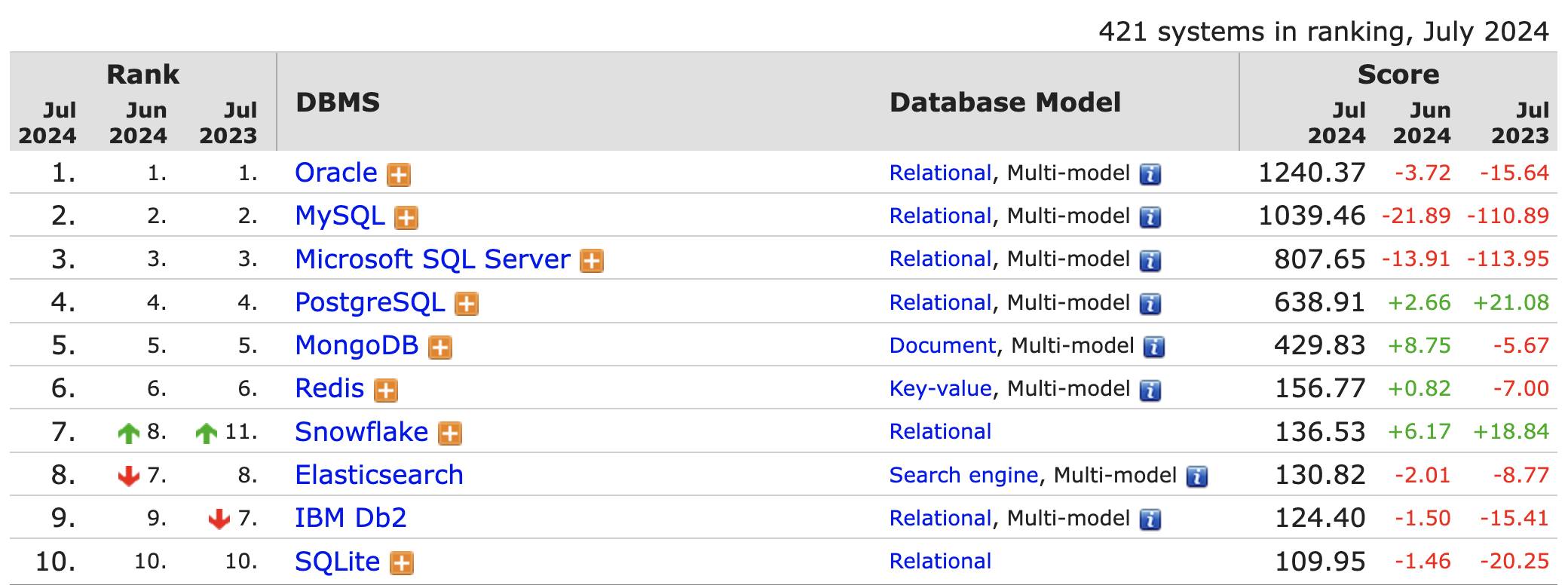
NoSQL and Generative AI
When Redis announced a controversial license change earlier this year, the Linux Foundation almost immediately announced its backing of an open source fork of Redis, named Valkey. The position of Redis, the company, is that the big cloud providers have an unfair market advantage and the new licensing is its way of trying to get them to pay up. MongoDB had made a similar move to tighten restrictions on its license back in 2018.
I’ll leave the debate about Redis’ new license to others, but I do want to highlight a blog post that Redis published the day after its announcement. Entitled “The Future of Redis,” it focuses heavily on AI uses for Redis. “We’re staying at the forefront of the GenAI wave,” wrote CEO Rowan Trollope and CTO Yiftach Shoolman, adding that “we were among the first to recognize the need for vector search functionality in a database, even before ChatGPT and LLMs were household names.”
The post detailed plans for an AI-powered assistant called Redis CoPilot (which is now available), “to allow developers to directly interact with their data using language and translate that into code.” It also intends to make Redis “even more cost-efficient for RAG use cases by leveraging product quantization and further improving vector processing performance with the latest hardware and GPU advancements.”
As for MongoDB, it too is targeting generative AI use cases. In a recent post on The New Stack, developer relations team lead Rick Houlihan explicitly compared its solution to PostgreSQL, a popular open source relational database system. Houlihan contended that systems like PostgreSQL were not designed for the type of workloads demanded by AI:
“Considering the well-known performance limitations of RDBMS when it comes to wide rows and large data attributes, it is no surprise that these tests indicate that a platform like PostgreSQL will struggle with the kind of rich, complex document data required by generative AI workloads.”
Unsurprisingly, he concludes that using a document database (like MongoDB) “delivers better performance than using a tool that simply wasn’t designed for these workloads.”
In defense of PostgreSQL, there is no shortage of managed service providers for Postgres that provide AI-focused functionality. Earlier this year I interviewed a “Postgres as a Platform” company called Tembo, which has seen a lot of demand for AI extensions. “Postgres has an extension called pgvector,” Tembo CTO Samay Sharma told me. “So that allows you to add a simple data type called vector to your existing tables. So even if you have your existing row of data, you could just add a vector data type — which is a transformed embedding.”
More Than Enough AI Data To Go Around
Of course, every database company now claims that it can be used well with AI. Just last month, Oracle released an AI-driven update to its Oracle APEX low-code development platform, which the company says enables non-developers to execute vector queries in less than two minutes, without knowing SQL.
When it comes to AI, there is currently no shortage of demand — and all database companies and projects, SQL or NoSQL, are benefiting from that.
YOUTUBE.COM/THENEWSTACK
Tech moves fast, don’t miss an episode. Subscribe to our YouTubechannel to stream all our podcasts, interviews, demos, and more.
